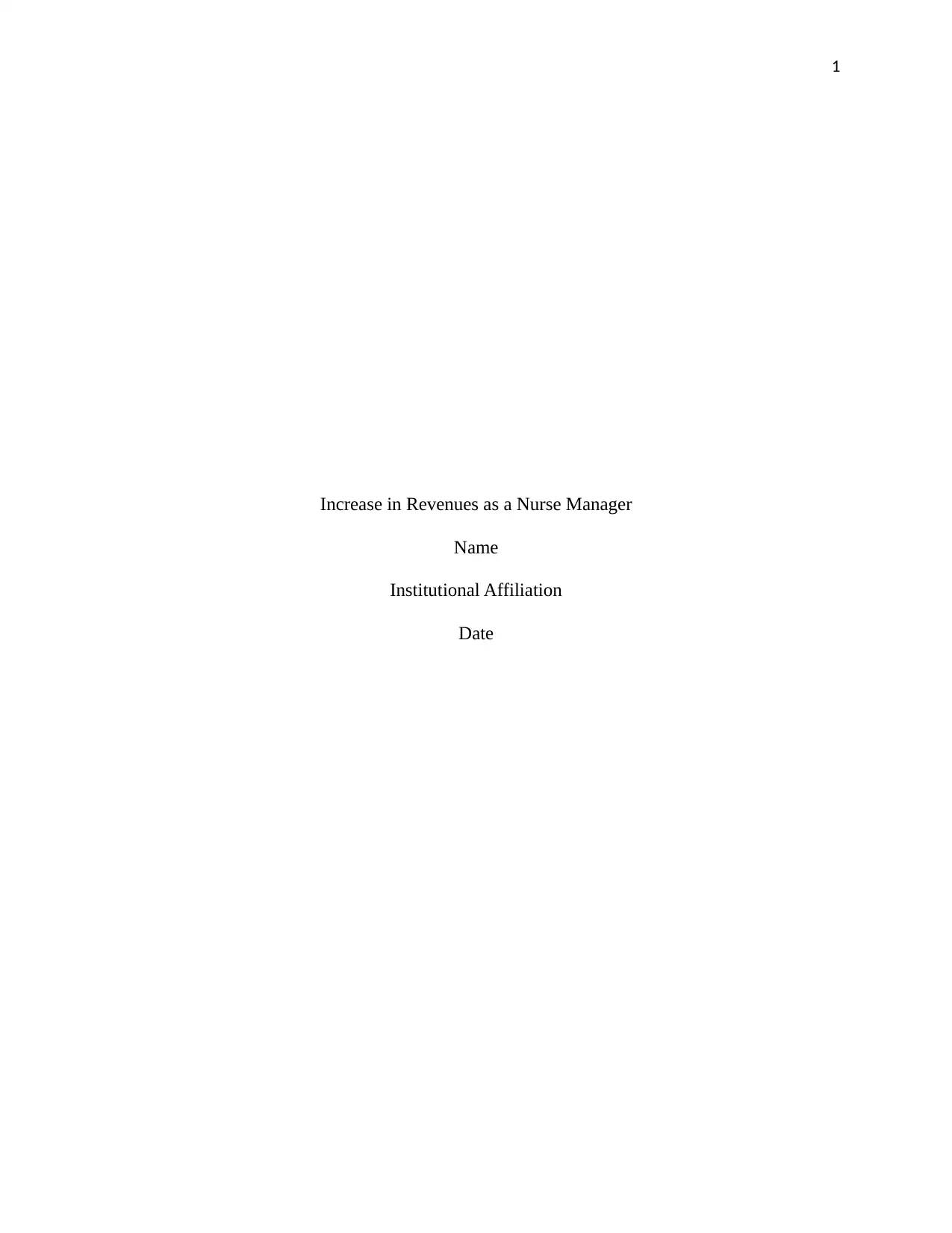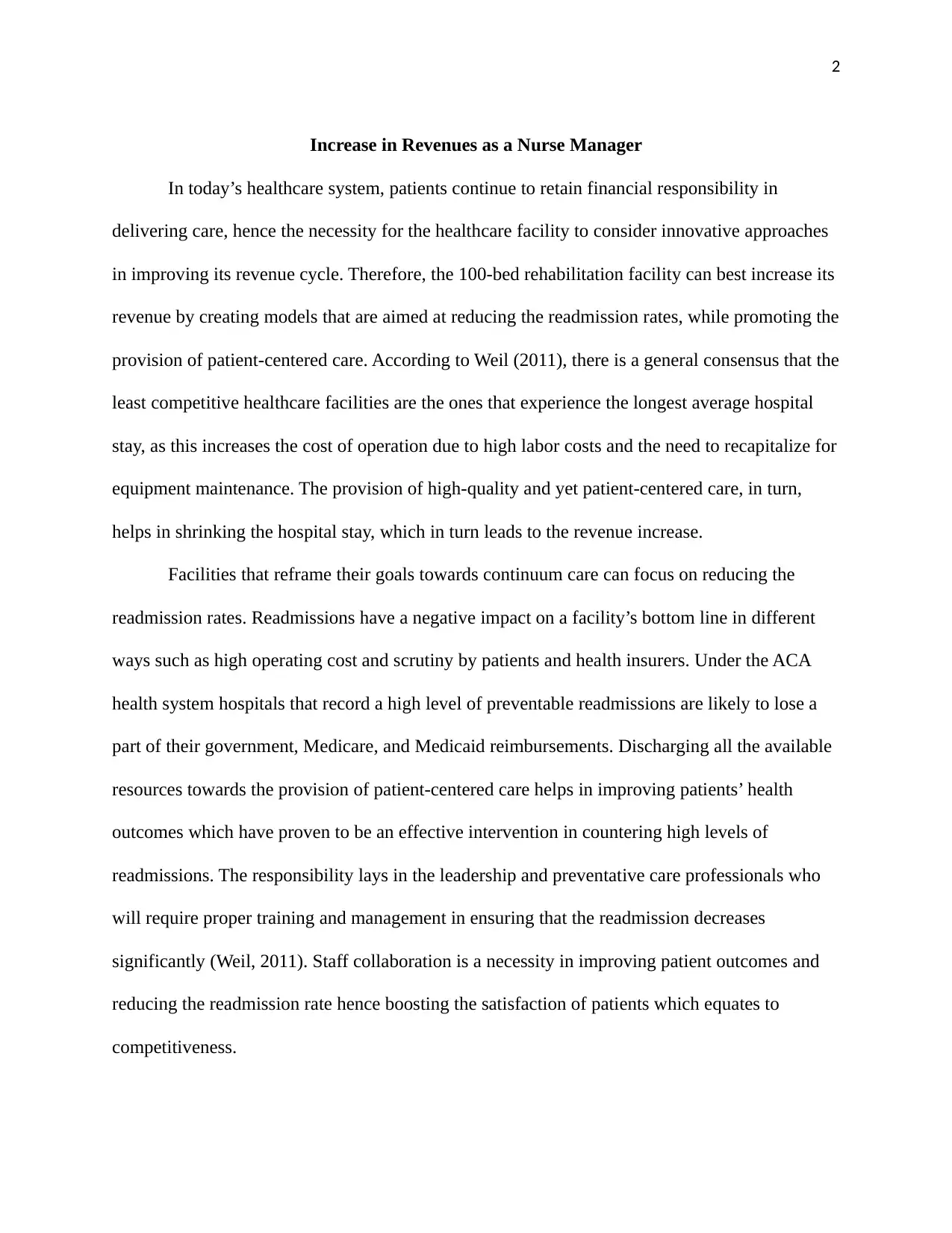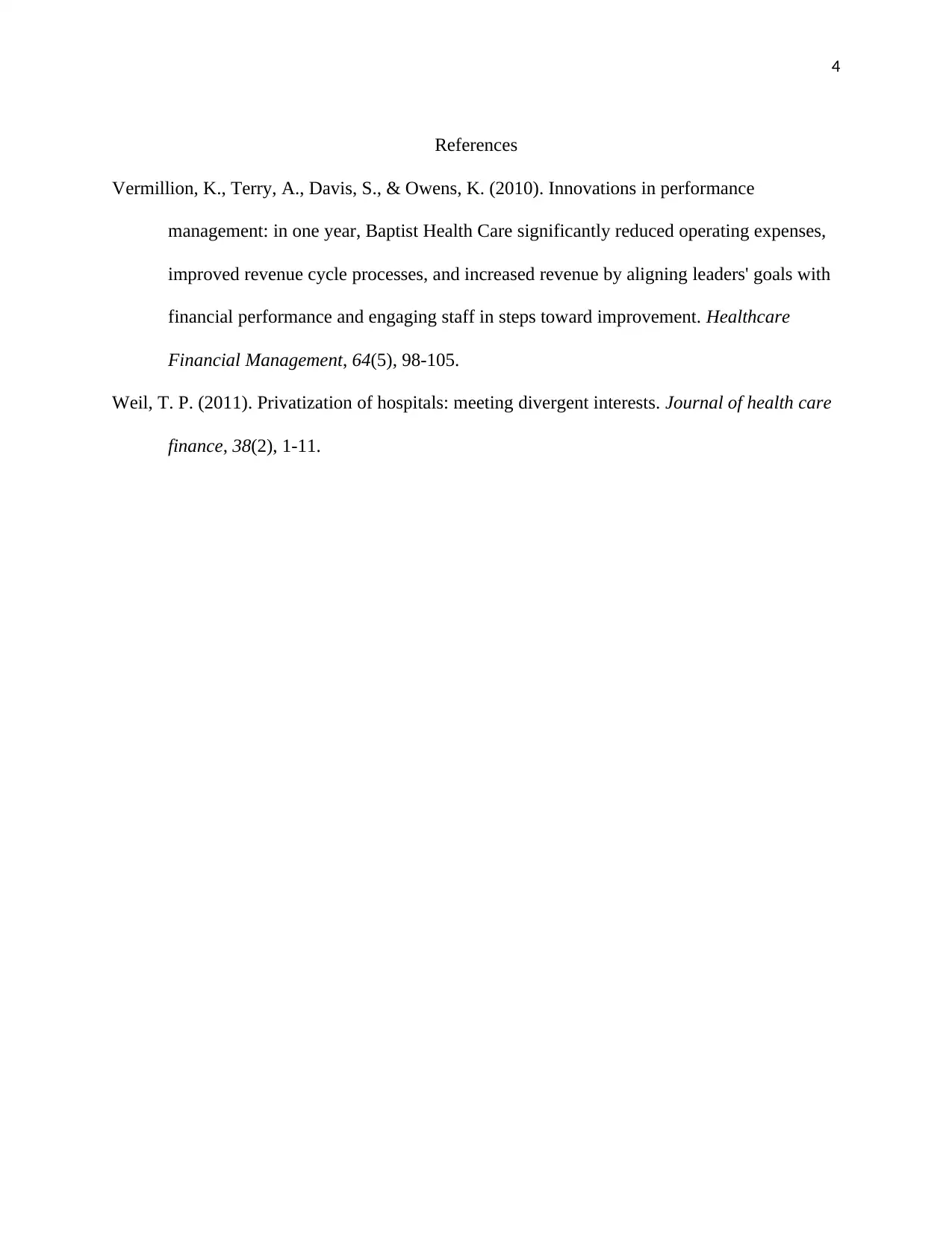Increasing Revenue in a Rehabilitation Facility: Nurse Manager's Role
VerifiedAdded on 2021/10/29
|4
|741
|259
Report
AI Summary
This report focuses on strategies for a nurse manager to increase revenue in a 100-bed rehabilitation facility. It emphasizes the importance of reducing readmission rates and promoting patient-centered care as key drivers for financial improvement. The report highlights that facilities with longer hospital stays face higher operational costs and suggests that focusing on continuum care can help reduce readmissions. It also discusses the negative impacts of readmissions on a facility's bottom line and the potential loss of government reimbursements. The report proposes adopting consumerism in the revenue cycle, improving staff training, and fostering collaboration among staff and stakeholders. The conclusion reiterates the importance of reducing readmission rates as an effective way to boost the facility's revenue and overall performance.
1 out of 4











![[object Object]](/_next/static/media/star-bottom.7253800d.svg)